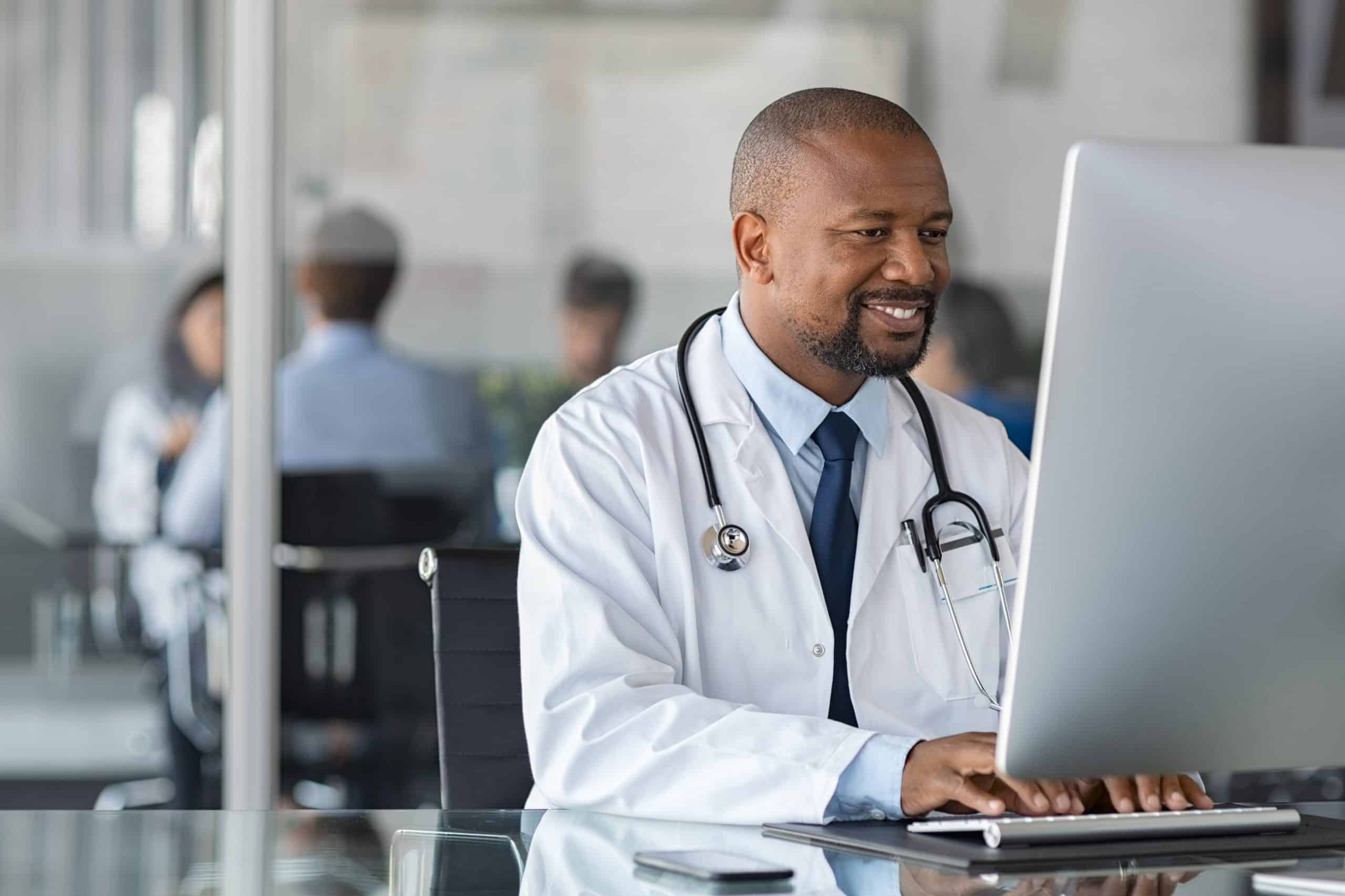In the healthcare industry, where the confidentiality and integrity of patient data are paramount, cybersecurity presents an ongoing challenge. The National Institute of Standards and Technology (NIST) has been instrumental in setting the standard for cybersecurity practices.
With the introduction of the Cybersecurity Framework (CSF) in 2014 and its update to version 2.0 in 2024, NIST has provided an invaluable tool for healthcare organizations navigating the complexities of digital security and HIPAA compliance.
The latest evolution, CSF 2.0, marks a significant advancement, particularly for the healthcare sector. It extends its reach beyond critical infrastructure, emphasizing the universal importance of cybersecurity across all aspects of healthcare operations.
The inclusion of a “Govern” function within the framework underscores the critical role of governance and leadership in cybersecurity, highlighting the need for a strategic approach to protecting sensitive health information.
At John Lynch & Associates, we specialize in guiding healthcare organizations through the implementation of robust cybersecurity strategies tailored to the unique needs of the healthcare sector. Our expertise lies in interpreting and applying NIST’s CSF 2.0 to not only meet current security challenges but also anticipate future threats.
By partnering with us, healthcare providers can ensure their cybersecurity measures are comprehensive, forward-thinking, and aligned with industry best practices.
- 1. The Evolution of Cybersecurity Standards in Healthcare
- 2. Embracing the Innovations of NIST CSF 2.0 in Healthcare Cybersecurity
- 3. NIST CSF 2.0’s Core Functions
- 4. Transitioning to NIST CSF 2.0
- 5. Adoption of NIST CSF 2.0
- 6. Global Impact and Future Directions of NIST CSF 2.0 in Healthcare Cybersecurity
- 7. Conclusion
- 8. Ready to Talk?
- 9. Related Articles
Article Highlights
- NIST's Framework 2.0 modernizes cybersecurity standards, emphasizing governance, supply chain security, and continuous improvement.
- Healthcare organizations face rising cybersecurity risks, including ransomware, data breaches, and supply chain vulnerabilities.
- Governance is a critical new focus, requiring leadership teams to actively oversee and integrate cybersecurity into overall business strategy.
- Managing third-party risks is now essential, as healthcare providers increasingly rely on external vendors and cloud services.
- Adopting NIST 2.0 helps healthcare organizations stay resilient, strengthen compliance, and build patient trust in a digital-first environment.
The Evolution of Cybersecurity Standards in Healthcare
Originally launched in 2014, the CSF was developed in direct response to the growing complexities of cybersecurity threats, with a keen focus on safeguarding critical infrastructure, including the healthcare sector.
As we work alongside healthcare organizations navigating through the ever-changing cybersecurity landscape, the NIST CSF has emerged as a cornerstone in our defense against cyberattacks.
Its widespread adoption across various industries has highlighted its versatility and effectiveness in offering a common language and systematic approach for managing cybersecurity risks, crucial for protecting patient information and ensuring HIPAA compliance.
The original CSF’s design was inherently flexible, allowing for adaptation to the specific needs and challenges faced by healthcare organizations of all sizes. This adaptability has been instrumental in its global recognition as a benchmark for cybersecurity practices, including those aimed at securing sensitive health data and maintaining patient privacy.
However, the relentless advancement of digital threats, coupled with the increasing sophistication of cyberattacks, underscored the need for the CSF to evolve. Thus, the initiation of NIST CSF 2.0 was a response to these challenges, incorporating feedback from healthcare stakeholders to ensure the framework remains relevant and robust in the face of modern technologies and evolving threats.
The core functions of the CSF, Identify, Protect, Detect, Respond, and Recover, provide a strategic view of the lifecycle of managing cybersecurity risk within healthcare settings.
This structured approach helps organizations to not only understand and mitigate risks to systems, assets, data, and capabilities but also aligns with HIPAA’s requirements for protecting patient information.
With the transition to NIST 2.0, an even greater emphasis is placed on governance and supply chain security, reflecting the interconnected nature of today’s digital healthcare ecosystems and the critical role of cybersecurity in operational resilience and regulatory compliance.

Embracing the Innovations of NIST CSF 2.0 in Healthcare Cybersecurity
The healthcare sector stands at a critical juncture in cybersecurity management, necessitated by the evolving landscape of digital threats. With the introduction of NIST’s CSF 2.0, a new chapter unfolds, offering healthcare organizations a refined blueprint for safeguarding sensitive patient data in alignment with HIPAA requirements.
This update is not merely a revision; it is a strategic expansion of the framework to meet the contemporary and future needs of cybersecurity in healthcare.
Broadening the Scope to Include All Healthcare Entities
Originally, the CSF was focused on bolstering cybersecurity defenses within critical infrastructure sectors, including healthcare. The CSF 2.0 broadens its perspective significantly, acknowledging that cybersecurity is a universal concern that affects healthcare entities of every size and type.
This inclusive approach ensures that from small clinics to large healthcare systems, all have access to a comprehensive set of guidelines for protecting patient information and maintaining operational integrity.
Introducing the “Govern” Function
The most pivotal enhancement in NIST 2.0 is the introduction of the “Govern” function. This addition underscores the essential role of governance in the cybersecurity domain, highlighting the necessity for healthcare organizations to integrate cybersecurity considerations into their overall risk management and decision-making processes.
The Govern function emphasizes the importance of leadership engagement and the strategic alignment of cybersecurity efforts with business objectives, including compliance with legal and regulatory requirements such as HIPAA.
Strengthening Governance and Supply Chain Security
The updated framework places a renewed emphasis on governance and supply chain security, areas of growing significance in the face of complex cyber-ecosystems. For healthcare organizations, this means adopting a comprehensive approach to managing cybersecurity risks, not only within their own operations but also across their entire supply chain, including third-party vendors and partners.
This comprehensive focus helps ensure the security and resilience of the healthcare delivery system, protecting patient data from end to end.
Providing Tailored Pathways and Enhanced Resources
To support the implementation of CSF 2.0, NIST has curated a suite of resources tailored to the unique needs of the healthcare sector. These include guides, success stories, and a catalog of informative references, all designed to facilitate a smoother transition to the updated framework.
These resources offer healthcare organizations practical insights and strategies for enhancing their cybersecurity posture, aligned with both NIST 2.0 and HIPAA requirements.

NIST CSF 2.0’s Core Functions
The NIST CSF 2.0 introduces a nuanced approach to managing cybersecurity risks in healthcare, aligning closely with the sector’s need for stringent protection of patient information and compliance with HIPAA.
The framework is built around six core functions that serve as the pillars of a robust cybersecurity strategy. Let us explore how each function can be tailored to the specific needs of healthcare organizations.
Identify
The foundation of any effective cybersecurity strategy is identifying what needs to be protected. In healthcare, this means having a clear understanding of where patient data resides, how it flows through your organization, and the various risks associated with digital and physical assets.
This function supports healthcare entities in creating an inventory of critical systems and sensitive information, thereby laying the groundwork for comprehensive risk management practices.
Protect
Protection mechanisms are critical in healthcare, where the stakes of a data breach can have serious implications for patient privacy and trust. The Protect function focuses on implementing safeguards like access control, data encryption, and regular security training for staff.
These measures are designed to ensure that patient data is securely managed and that healthcare operations are resilient against cyber threats.
Detect
Rapid detection of cybersecurity events is vital in minimizing potential damage. This is especially true in healthcare, where delays can impact patient care. The Detect function emphasizes the importance of continuous monitoring and real-time analysis to identify suspicious activities or breaches as quickly as possible.
Implementing advanced detection tools and practices enables healthcare organizations to stay ahead of potential threats.
Respond
The Respond function outlines the actions necessary to address and mitigate the impact of a cybersecurity incident. In healthcare, this includes technical response measures and communication strategies to manage patient concerns and regulatory reporting requirements.
A well-structured response plan ensures that healthcare providers can quickly contain incidents, maintain continuity of care, and comply with legal obligations.
Recover
Following a cybersecurity incident, the ability to recover is essential for restoring patient services and maintaining trust. The Recover function focuses on plans and processes for returning to normal operations and implementing lessons learned to strengthen future resilience.
This includes reviewing and updating incident response and recovery plans to better protect patient information against future threats.
Govern
The addition of the Govern function in NIST CSF 2.0 emphasizes the critical role of governance in cybersecurity. For healthcare organizations, this means integrating cybersecurity risk management into the overall governance framework, ensuring that decisions reflect the organization’s commitment to protecting patient data. Engaging leadership in cybersecurity discussions and decisions aligns efforts with the broader objectives of patient safety and regulatory compliance.
By applying these six core functions, healthcare organizations can develop a holistic cybersecurity strategy that not only addresses current threats but also anticipates future challenges.
Transitioning to NIST CSF 2.0
For healthcare organizations already familiar with the original CSF, transitioning to version 2.0 involves several key steps:
- Review and Understand the Updates: Begin by comprehensively reviewing the changes and new elements introduced in CSF 2.0, particularly focusing on the “Govern” function and its implications for healthcare cybersecurity and HIPAA compliance.
- Conduct a Gap Analysis: Assess your current cybersecurity framework against the updated requirements and guidelines of CSF 2.0 to identify areas that need enhancement or adjustment.
- Engage Stakeholders: Involve stakeholders across the organization, from Information Technology (IT) to executive leadership, in discussions about the transition to ensure a unified approach to integrating cybersecurity with healthcare operations and compliance efforts.
- Update Policies and Procedures: Revise existing cybersecurity policies and procedures to align with CSF 2.0, incorporating the latest best practices for protecting patient information and ensuring continuity of care.
- Training and Awareness: Implement training programs to educate staff on the updated framework and their roles in maintaining a secure and compliant healthcare environment.
Adoption of NIST CSF 2.0
For those new to the framework, adopting NIST 2.0 as the cornerstone of your cybersecurity strategy involves:
- Comprehensive Review: Thoroughly examine the CSF 2.0 to understand its structure, core functions, and guidance, with a focus on how it can be tailored to meet the unique cybersecurity challenges of the healthcare sector.
- Initial Assessment: Perform an initial assessment to evaluate your organization’s current cybersecurity posture in relation to CSF 2.0’s guidelines, identifying strengths and areas for improvement.
- Implementation Planning: Develop a detailed plan for integrating CSF 2.0 into your healthcare operations, prioritizing actions based on risk assessment outcomes and resource availability.
- Leverage CSF Resources: Utilize the tools and resources provided by NIST, including sector-specific guides and case studies, to facilitate the adoption process and enhance your cybersecurity measures.
- Continuous Improvement: Adopt a continuous improvement mindset, recognizing that cybersecurity is an evolving field, and your practices should adapt to address new threats and leverage emerging technologies effectively.
By following these strategic steps, healthcare organizations can successfully implement or transition to NIST CSF 2.0, reinforcing their cybersecurity defenses, ensuring HIPAA compliance, and protecting patient data against a backdrop of increasingly sophisticated cyber threats.
Global Impact and Future Directions of NIST CSF 2.0 in Healthcare Cybersecurity
The rollout of CSF 2.0 represents not just an advancement in cybersecurity practices but a significant milestone for the healthcare sector globally.
Its comprehensive approach and adaptability make the framework a crucial tool for healthcare organizations worldwide, aiming to protect sensitive patient information and navigate the complexities of HIPAA compliance in an increasingly interconnected digital landscape.

A Living Framework for a Dynamic Healthcare Environment
Recognizing the dynamic nature of cybersecurity threats, CSF 2.0 is designed as a “living document,” with ongoing updates and enhancements based on feedback from the healthcare community and cybersecurity experts.
This approach ensures that the framework remains relevant and effective in addressing both current and emerging threats, providing healthcare organizations with the guidance needed to adapt to the evolving digital threat landscape.
Encouraging Global Adoption and Collaboration
The widespread use and acceptance of the CSF, including its adoption outside the United States, highlight its role as a foundational element for international cybersecurity practices.
The alignment of NIST CSF 2.0 with global standards and its translation into multiple languages facilitate its adoption across international boundaries, promoting a cohesive and collaborative approach to cybersecurity risk management in healthcare.
As we look ahead, the ongoing evolution of NIST 2.0 will continue to shape the future of healthcare cybersecurity. By adapting to and implementing the framework, healthcare organizations worldwide can enhance their defenses against cyber threats, ensuring the protection of patient information and maintaining compliance with HIPAA and other regulatory standards.
Conclusion
The advent of NIST’s Cybersecurity Framework 2.0 marks a pivotal moment for cybersecurity within the healthcare industry. As we have navigated through the enhancements and expansions of the framework, NIST 2.0 is more than just a set of guidelines—it is a comprehensive approach to securing sensitive patient information and ensuring operational resilience against evolving cyber threats.
By broadening its scope and introducing critical elements such as the “Govern” function, CSF 2.0 acknowledges the complex, interconnected nature of today’s healthcare ecosystems. It provides a flexible yet structured pathway for organizations of all sizes to enhance their cybersecurity measures, aligning with HIPAA compliance and protecting against data breaches that could compromise patient privacy and trust.
The implementation of NIST 2.0 in healthcare is not merely a regulatory requirement; it is a strategic investment in the future of healthcare delivery. It ensures that organizations can maintain the confidentiality, integrity, and availability of patient data, fostering a secure environment where healthcare professionals can focus on delivering high-quality care.
Leveraging our unique expertise and experience in cybersecurity and healthcare compliance, our consultants are uniquely positioned to assist healthcare organizations in interpreting and implementing the enhancements of NIST CSF 2.0.
We understand that navigating the complexities of cybersecurity can be daunting. Our team is here to support you every step of the way, ensuring that your healthcare organization is equipped to face the digital threats of today and tomorrow.
For more information on how we can assist with your healthcare cybersecurity or compliance needs, please contact us at 623.980.8018 or connect with us here.
Ready to Talk?
Related Articles

How to Build a Value-Based Healthcare IT Strategy for Ambulatory Providers

A Comprehensive Tribal Health IT Strategy for Modern Tribal Health Leaders


